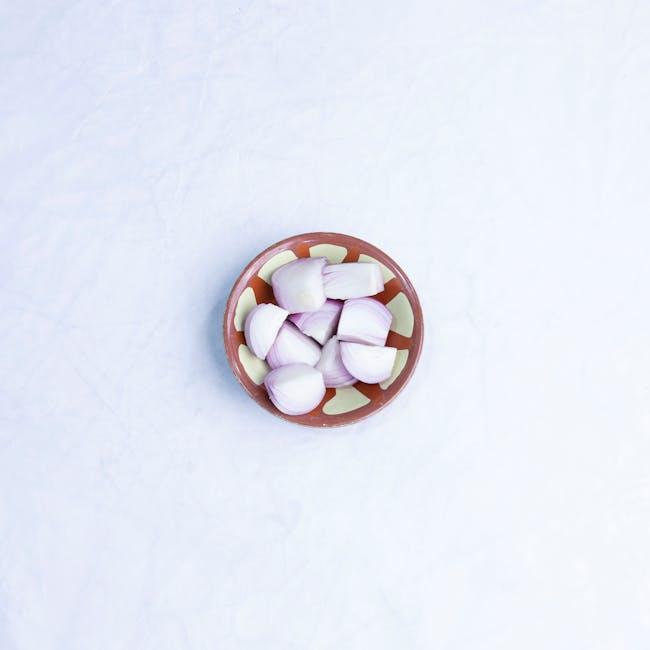Table of Contents
- Understanding the Basics of Kombucha Culture
- The Health Benefits of Drinking Kombucha
- How to Cultivate Your Own Kombucha Culture at Home
- Exploring Flavor Innovations and Infusions
- Troubleshooting Common Kombucha Brewing Issues
- Q&A
- Insights and Conclusions
Understanding the Basics of Kombucha Culture
Kombucha culture is a fascinating blend of yeast and bacteria that forms a symbiotic colony known as SCOBY. This gelatinous disk, often resembling a mushroom, is responsible for the fermentation process that transforms sweetened tea into the fizzy and tangy beverage beloved by many. The primary role of this culture is to ferment the sugars present in the tea, producing not only the signature effervescence but also a variety of acids, vitamins, and probiotics that contribute to kombucha’s unique flavor profile and potential health benefits.
When brewing kombucha, the balance of ingredients is crucial. To get started, you’ll need:
- Tea: Black, green, or herbal.
- Sugar: White granulated sugar is commonly used to nourish the SCOBY.
- SCOBY: This is the living culture that ferments the tea.
- Starter Tea: A small amount of previously fermented kombucha to kickstart the process.
Each ingredient plays a vital role in influencing the taste and quality of your kombucha, and experimenting with different types can yield various flavors and aromas. Additionally, factors such as temperature, brewing time, and even the local environment can impact the fermentation process, making each batch uniquely yours.
To understand the dynamics within kombucha culture, it is essential to recognize the two primary microorganisms at play:
| Microorganism | Role in Fermentation |
|---|---|
| Yeast | Converts sugars into alcohol and carbon dioxide, adding to the fizz. |
| Bacteria | Transforms alcohol into acetic acid, giving kombucha its tangy flavor and potential health benefits. |
With this understanding, enthusiasts can better appreciate the intricate processes driving kombucha production, making for a more rewarding brewing experience. Whether you are savoring a store-bought bottle or concocting your own batch at home, knowledge of kombucha culture elevates your appreciation for this ancient drink.


The Health Benefits of Drinking Kombucha
Kombucha, the fermented tea that has captured the hearts of many, is more than just a fizzy drink—it’s a powerhouse of health benefits. One of the standout features of kombucha is its probiotics, which are beneficial bacteria that can support digestive health. When you consume kombucha, you’re introducing these microorganisms into your gut, which can help to balance your intestinal flora and enhance nutrient absorption. This can lead to improved digestive processes and may even alleviate discomfort such as bloating or irregularity.
Moreover, kombucha is rich in antioxidants, which play a vital role in combating oxidative stress in the body. Antioxidants help neutralize harmful free radicals, potentially reducing the risk of chronic diseases. For those who are health-conscious, incorporating kombucha into your diet can serve as a refreshing alternative to sugary beverages while still providing significant health benefits. It supports overall wellness by possibly lowering inflammation, which is linked to various health conditions.
Additionally, some studies suggest that drinking kombucha may contribute to improved mental clarity and emotional well-being. The amino acids present in this fermented drink, as well as B vitamins, can potentially enhance brain health and mood. People who make kombucha a regular part of their diet often report higher energy levels and decreased feelings of stress. Creating a balanced lifestyle with the inclusion of kombucha might be a refreshing step towards holistic health.


How to Cultivate Your Own Kombucha Culture at Home
Cultivating your own kombucha culture at home is an exciting and rewarding endeavor. To start, you’ll need a few essential ingredients and tools to create the perfect environment for your SCOBY (Symbiotic Culture of Bacteria and Yeast) to thrive. Gather the following items:
- Tea: Black or green tea works best due to their natural compounds that boost fermentation.
- Sugar: Use plain white sugar as it feeds the yeast and bacteria.
- Starter Kombucha: This can be store-bought or leftover from a previous batch.
- SCOBY: Obtain one from a friend or online source to kickstart your brewing journey.
- Glass Jar: A wide-mouth glass jar, preferably 1-gallon size, is ideal.
Once you have your ingredients ready, the next step is to brew the sweetened tea. Start by boiling water and steeping your tea to create a concentrated brew. After the tea is steeped, stir in the sugar until fully dissolved. Let the mixture cool to room temperature before pouring it into your glass jar, where you’ll add the starter kombucha. Gently place the SCOBY on top and cover the jar with a clean cloth secured with a rubber band to allow airflow while keeping contaminants out.
Place your jar in a warm, dark place, ideally between 70°F to 85°F (21°C to 29°C), allowing the fermentation process to begin. Within a week or two, you’ll notice a gelatinous layer forming on the surface, which indicates your culture is successful. It’s essential to taste your kombucha regularly after the first week, adjusting the fermentation time to your preferences. The longer it brews, the more tart and complex the flavor becomes. Enjoy experimenting with this vibrant culture!


Exploring Flavor Innovations and Infusions
The world of kombucha is continuously evolving, with flavor innovations and infusions leading the charge in attracting enthusiasts and newcomers alike. Many brewers are stepping beyond traditional tea bases, exploring a plethora of botanical ingredients and aromatic herbs. This experimentation not only enhances the taste profiles but also elevates the health benefits associated with this effervescent beverage. Popular choices for flavoring include:
- Berries: Adding fruits like blueberries, raspberries, and strawberries lends both sweetness and a vibrant color.
- Citruses: Ingredients such as lemon, lime, and orange provide a zesty kick that brightens the overall flavor.
- Herbs and Spices: Fresh mint, ginger, or even lavender can create complex layers that enhance the kombucha experience.
Naturally sourced ingredients are often at the forefront of these flavor advancements. Many artisans are leveraging unique infusions that involve cold-brewing techniques or utilizing experimental brewing methods. A trend that’s gaining traction is the second fermentation, wherein flavored ingredients are introduced after the initial fermentation, resulting in a fizzy, invigorating drink that’s rich in probiotics. Above an appealing taste, the benefits of these infusions are numerous, often resulting in beverages that support digestion and boost immunity.
To help navigate the burgeoning landscape of flavor innovations, here’s a brief overview of popular kombucha flavors and their unique benefits:
| Flavor | Benefits |
|---|---|
| Ginger Lemon | Anti-inflammatory and digestive support. |
| Blueberry Mint | Rich in antioxidants; refreshing. |
| Lavender Chamomile | Calming effects; aids with relaxation. |
As consumers become increasingly health-conscious, the fusion of flavor with vitality is likely to shape the future of kombucha brewing. Producers are inspired to continuously innovate, introducing new combinations that cater to evolving tastes and nutritional needs. The exploration of flavor not only defines the art of brewing but also enhances the communal culture around sharing and enjoying this fizzy elixir.


Troubleshooting Common Kombucha Brewing Issues
Kombucha brewing can sometimes feel like navigating a labyrinth, especially when unexpected issues arise. If you notice your brew turning out less than perfect, identifying the root cause is key to mastering the art of fermented tea. One common problem is a foul smell, which may indicate insufficient airflow or a contamination issue. Ensure your brewing jar is properly covered with a breathable cloth, allowing the SCOBY to interact with ambient air without attracting unwanted bacteria.
Another frequent dilemma brewers face is the presence of off-flavors. This can occur if the fermentation process is either too short or too long. In some cases, the brew may be too acidic, resulting in vinegar-like tastes. To achieve the right balance, monitor the fermentation time closely. A typical solution is to taste your kombucha every few days after the initial fermentation period, allowing you to find that sweet spot where the flavors are just right.
bubbles—or the lack thereof—can be a source of frustration. If your kombucha is too flat, it could mean not enough sugar is present for carbonation, or your fermentation conditions need adjusting. Ensuring your fermentation environment is warm enough (ideally between 75-85°F) can boost yeast activity. You might also consider adding a small amount of sugar before bottling to enhance fizz. Here’s a brief table summarizing these potential issues and quick fixes:
| Issue | Possible Cause | Solution |
|---|---|---|
| Foul Smell | Insufficient airflow or contamination | Ensure breathable cloth covering |
| Off-Flavors | Fermentation too short or long | Taste regularly; adjust time accordingly |
| Flat Kombucha | Insufficient sugar or low temperatures | Warm environment; add sugar before bottling |
Q&A
Q&A: Understanding Kombucha Culture
Q1: What exactly is a kombucha culture? A: A kombucha culture, often referred to as a SCOBY (Symbiotic Culture of Bacteria and Yeast), is a gelatinous, pancake-like mass that grows on the surface of fermenting kombucha. This culture is essential for the fermentation process, as it contains the live microorganisms necessary to transform sweet tea into the tangy, effervescent drink that kombucha enthusiasts love.Q2: How do you create a kombucha culture? A: To create a kombucha culture, you’ll need a starter tea, which is essentially fermented kombucha from a previous batch. Combine sweetened tea with this starter tea in a clean container, then introduce a SCOBY. Cover the container with a breathable cloth and let it ferment for a week or two. With the right conditions, a new SCOBY will develop on the surface.
Q3: What role do bacteria and yeast play in kombucha fermentation? A: In the fermentation process, yeast converts sugars into alcohol and carbon dioxide, while bacteria transform the alcohol into acetic acid, imparting the distinct tangy flavor of kombucha. This symbiotic relationship between yeast and bacteria is what makes the fermentation process dynamic and interesting.
Q4: How can you tell if your kombucha culture is healthy? A: A healthy kombucha culture typically has a firm, glossy appearance, and may vary in color from pale tan to dark brown, depending on the tea used. If your SCOBY develops unusual colors (like green or black) or an off-putting odor, it may be a sign of contamination, and it is best to discard it and start anew.
Q5: Can you reuse a SCOBY? A: Absolutely! A SCOBY can be reused multiple times for brewing new batches of kombucha. In fact, it’s common for SCOBYs to multiply, producing “baby” SCOBYs along the way. Just be sure to monitor the health of your culture and replace it when it begins to show signs of wear and tear.
Q6: Is it possible to flavor kombucha, and when should I do it? A: Yes! Flavoring your kombucha is a delightful way to enhance its taste. You can add fruits, herbs, or spices after the primary fermentation is complete. This is known as the second fermentation, where you can bottle your kombucha with the desired flavorings and let it sit for a few more days for carbonation to develop.
Q7: What health benefits does kombucha provide? A: Kombucha is often praised for its potential health benefits, which may include improved digestion, enhanced immune function, and detoxification properties, thanks to the presence of probiotics and antioxidants. However, individual results can vary, and it’s always a good idea to consult with a healthcare professional regarding dietary changes.
Q8: How long can I store my kombucha SCOBY? A: If you need to take a break from brewing, your SCOBY can be stored in a small batch of sweetened tea in a glass jar, kept in a cool, dark place. It can also be refrigerated for short periods, but ideally, it’s best to keep it at room temperature to maintain its vitality.
Q9: What should I do if my kombucha tastes too sour? A: A sour flavor is often a sign that your kombucha has fermented for too long. If this happens, you can dilute it with some fresh tea or create a fruity cocktail by mixing it with juice. Next time, keep a closer eye on the fermentation process to avoid over-fermentation.
Q10: Do I need to worry about alcohol content in kombucha? A: While some alcohol is produced during kombucha fermentation, the percentage is usually low (typically under 0.5% ABV for commercial kombucha). If you’re brewing at home, fermentation times can affect the alcohol level, so if you’re concerned, it’s wise to test it with a hydrometer.
This Q&A should help clarify some fundamental aspects of kombucha culture while encouraging curiosity and exploration in this beautiful fermentation journey!
